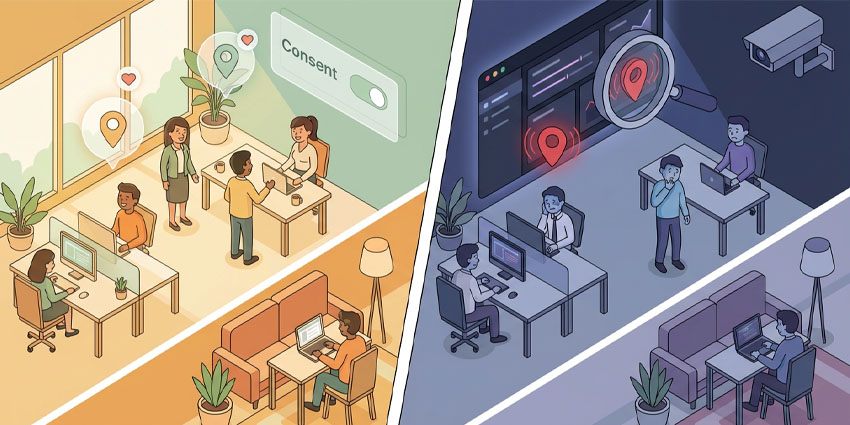Software giant Zoom has recently just published an online survey for 2022 with a statistic showing that average meeting attendances are down from 10 to 7 people, a drop of 30 per cent.
This came with a slight decrease in meeting length, at 52 minutes compared to last year’s 54.
The “2022 on Zoom” used “aggregated anonymised Zoom usage data” between November 1st 2021 to October 31st 2022, with the tech firm using the AI-powered feedback solution SurveyMonkey to gather insights from 2,800 respondents.
Generational Differences in Zoom Usage
The survey discovered a range of exciting differences between the generations in using team chat, phone calls, whiteboards, rooms and in conducting webinars and events.
Zoom recently consolidated its position as a global market leader in the UCaaS space by placing among the five leaders in the Gartner Magic Quadrant for 2022, just behind Microsoft and RingCentral for the Ability to Execute and Completeness of Vision. Zoom Phone has passed 3 million users and announced in 2022 that it has 4 million seats sold. The survey showed that October 18 was the busiest year and that, in general, Wednesdays are the peak days for use. Fridays were shown to be the slowest days for calls.
In the main, Friday was also revealed as the slowest day for meetings, meetings, chats, webinars and rooms. Conversely, Wednesday again proved the liveliest day for team chats, whiteboard use, plus hosting webinars. The busiest day for several meetings, conference room usage, and hosting hybrid events were found to be Tuesday.
Zoom Calling Locations
Regarding the location of Zoom use when not at a desk, meeting from bed fell dramatically by almost half, with only 25% calling from bed compared to last year’s 42%. Generation Z users (born 1997-2012) were the most common group to use Zoom from bed, at 61%. Women were 11% more likely to call from bed.
The most popular calling location not from a desk was in-car at 43% of the 2,800 surveyed, while 19% said they were meeting from a coffee shop and 18% at airports. Interestingly, almost a third of the 392 that stated they Zoomed whilst out jogging were Millennials (born 1981-1996).
New Practices v Old School Approach
Western world generation markers for demographic purposes showed some predictable uptakes for new practices. For communication, the younger generations, such as Gen Z (36%) and Millennials (51%), preferred to use team chat. On the other hand, emailing was the preferred choice of the older Gen X (35%) and Baby Boomers (42%) age brackets.
When joining meetings, more than half surveyed said they had their cameras on, with Baby Boomers (born 1946-64) trusting the process more, with 65% ready to face colleagues. Oddly, 63% of Gen Z still preferred their cameras off even though they were the generation group that liked video meetings more.
As far as meeting practices have gone, attendees are getting the hang of not appearing while on mute’. This year 52% needed to tell others they were muted, a fall of 21% from 2021. Meanwhile, pets on camera also dropped from 36% to 28%. Over a third of those surveyed admitted to wearing an intelligent top but something more casual below, more commonly known as a ‘Zoom mullet’.
Helping to Understand How Colleagues Connect
Rhonda Hughes, Global Content, Social and Advocacy Lead at Zoom, commented on how the survey has helped show how colleagues connect, even though the numbers are meant to be fun. Hughes said: “We might all learn a thing or two about how to connect with our colleagues, what days not to schedule meetings, when to fire up a whiteboard, and more.”
Relating specific products to the survey, Hughes stated:
“We launched Zoom Whiteboard in April 2022. And while we only have about half a year’s worth of data, we love how much people use whiteboards. On average, 81% of whiteboards are created during video meetings, which tells us users love to ideate, annotate, and live with colleagues.”
Zoom Rooms
Regarding Zoom Rooms, Hughes revealed: “As companies return to the office, we’ve seen a steady increase in Zoom Rooms meeting activity the past year — an average of 6.5% increase month-over-month since November 2021.”
The survey showed the busiest day for hosting webinars was February 24th, and the slowest was January 1st. Hughes added: “While users are not hosting webinars for the new year, they are giving them some weekend love. Sundays are 32% busier for webinars than Saturdays.”
Advice for When to Schedule Events
While discussing Events and the information to be gleaned for the data, Hughes had this piece of advice; she stated: “If you want to host a multi-day event that your busy target audience will be available to attend, you may want to skip late October because their calendars are full. The busiest day of 2022 for Zoom Events was October 26th — followed by October 24th, 25th, and 27th. Otherwise, Tuesday was Zoom Events’ busiest day of the week.”
Pet Hates for Zoom Users
The 2022 on Zoom survey also brought up some key bugbears for users. Notably, those who talk over others in a meeting, with a third of those questioned finding this… questionable. Around a quarter surveyed also didn’t like it when colleagues decided to ask a question after the meeting had ended or were eating whilst not on mute. Other pet peeves discovered were meetings scheduled on Friday afternoons and all-caps typing.
Where language was concerned, the classic corporate-speak phrases “Think outside the box” was especially irksome to Baby Boomers, ‘Circle back” annoying for women and “Low-hanging fruit” also came under fire for over-use. From a generational standpoint, Gen Z weren’t lovers of “I’ll ping you” and “Take this offline”, while both Millennials and Gen-Xers (born 1965-1980)) hate the word “Synergise”.
Emojis, GIFS and Backgrounds
For emojis, only Baby Boomers showed special disconcertion, with 25% hating them. In general, 22% loved, 17% hated, and, most of all, 61% were indifferent. Of the emojis, the thumbs up 👍 sign garnered the most favour at 61%. Interestingly, the 72% of Gen-Zers comfortable with the “thumbs up” as an emoji for “okay” contradicts recent studies saying Gen-Z see it as a passive-aggressive sign.
GIFS didn’t come in for a lot of love in the survey, with 53% showing indifference and 28% hating them. More than a third of Baby Boomers tended to hate them, whereas nearly half of the Millennials asked said they liked them.
Finally, in the virtual world, a surprising stat was that of backgrounds, with more than half opting for real-life and just over a quarter going for a virtual one behind.







